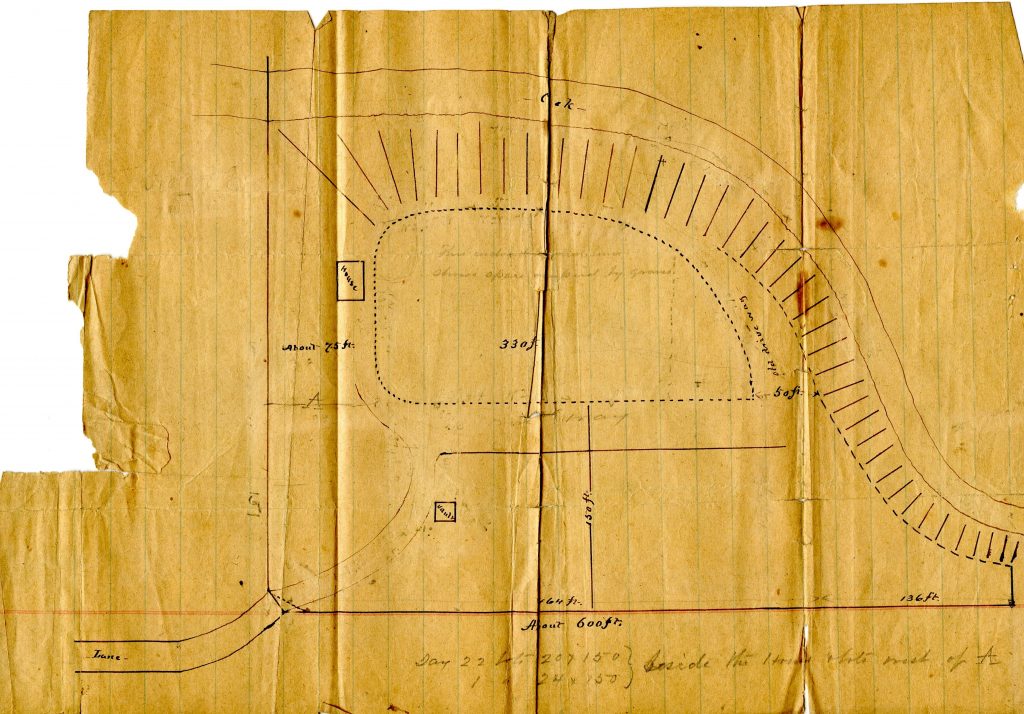Although a portion of the Fifth Street meetinghouse grounds had been set aside as a cemetery in 1819, by 1833 the property was now occupied by two meetinghouses and a schoolhouse, and the remaining space was not sufficient for the burial needs of the community. In 1834, a collection was taken to purchase about three quarters of an acre located roughly a mile north of the meetinghouse. The cost of the lot was $400—half to be paid upon receipt of the deed, and the remainder to be paid at the end of two years, with an interest rate of six percent.
The site was bounded by Poplar Street on the south, Livingston Street on the north, Freeman Avenue on the west, and Baymiller Street on the east. it was covered with trees at the time, and the sale of the wood covered the expense of clearing the land. Within two years, the meeting was not only able to pay off the property, but also to install a vault that could be used to hold bodies until graves were dug.
Within ten years of its initial purchase, however, the Poplar Street site was causing “some uneasiness in the minds of some Friends in reference to the future.” A committee was appointed to find another cemetery location, but it wasn’t until twelve years later that the meeting finally decided to purchase almost five and a half acres along Beekman Street between Dreman and Elmore Avenues, adjacent to the west fork of the Mill Creek in Cumminsville.
James Taylor purchased the property on behalf of the meeting for $2,500, obtaining an additional tenth of an acre for $150 for a public road to the grounds. To be able to reimburse Taylor, the meeting sold a 60 x 100-foot portion of the Poplar Street lot for $2,100 to the Young Men’s Home Missionary Society of the Second Presbyterian Church of Cincinnati. The funds were deposited in the Ohio Life Insurance and Trust Co. bank, which failed a month later, leaving the meeting without the means to repay the debt. To compensate for this, the meeting sold Taylor another portion of the Poplar Street lot, and promptly gave the purchase price back to him.
With the West Fork burial ground now available, a committee was appointed to “render assistance and advice in the disinterment and removal of the dead [from the Poplar Street burial ground], and endeavor to convince Friends (where opportunity is afforded) of the necessity that seems to exist of as early a removal of their dead as is practicable.” By 1859, almost all of the 158 individuals buried there had been removed. Many of the deceased were reinterred in the West Fork burial ground, and the meeting covered the cost for those who were unable to pay the expense of relocating their relatives.
By 1860, the last of the Poplar Street property was sold, and the meeting built a vault at the Cumminsville cemetery.

This article comes from the book Friends Past and Present: The Bicentennial History of Cincinnati Friends Meeting (1815–2015). You can obtain a copy of the printed book or a Kindle version from Amazon.com. The proceeds of all sales go to Cincinnati Friends Meeting.
